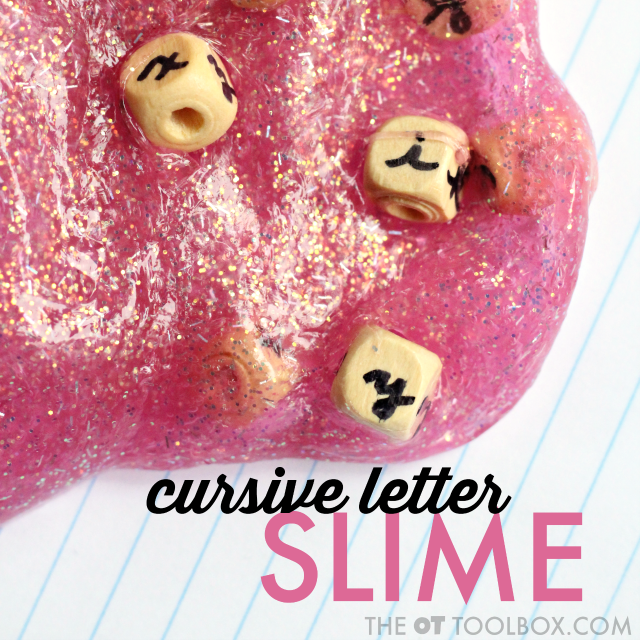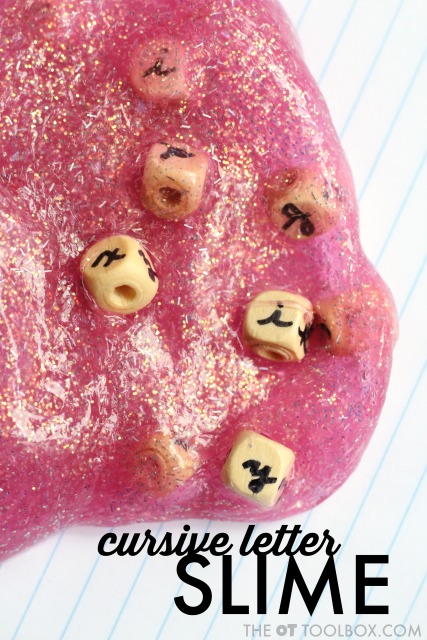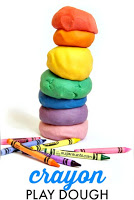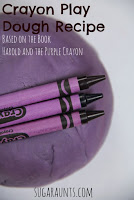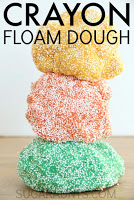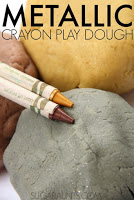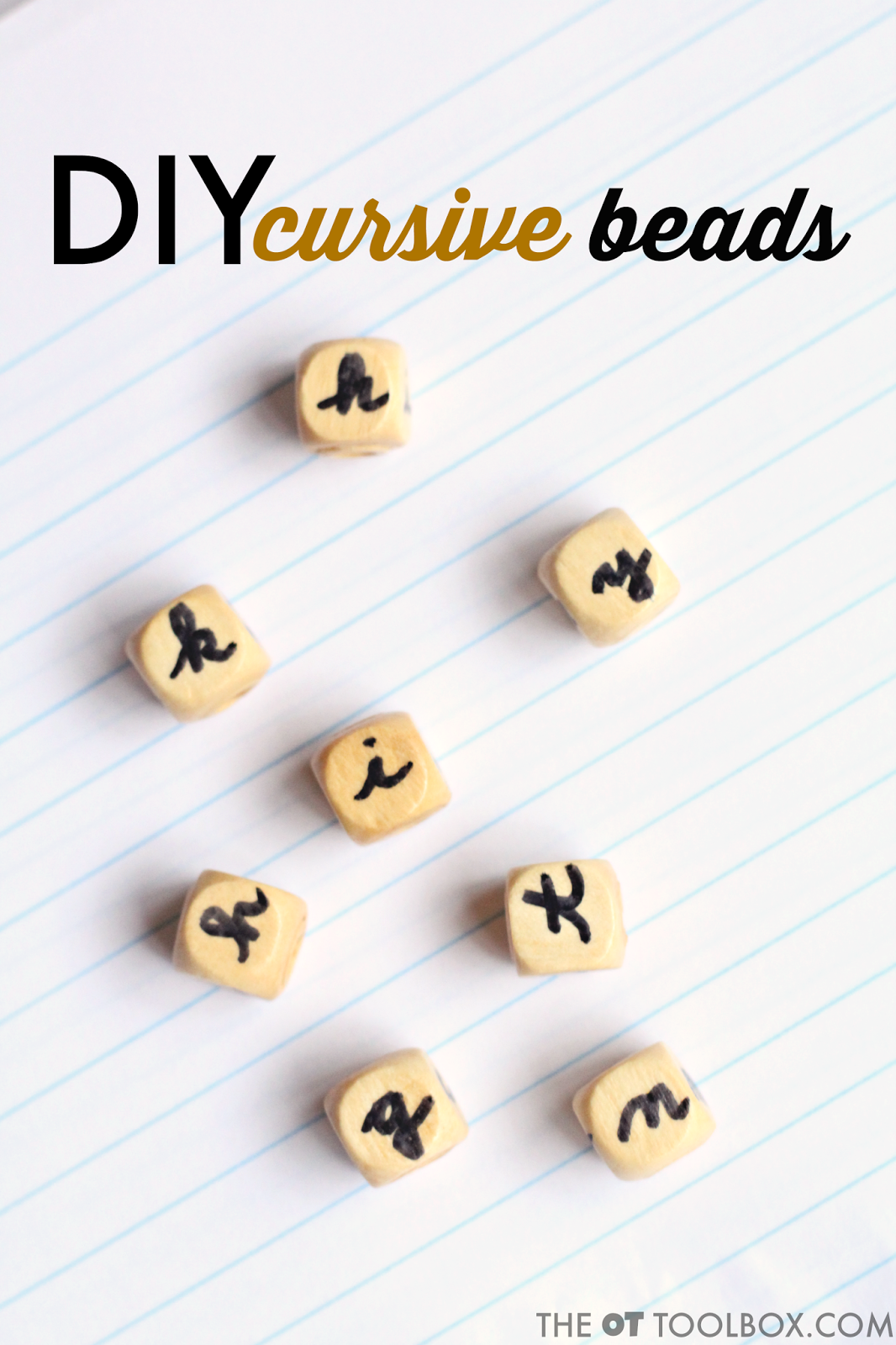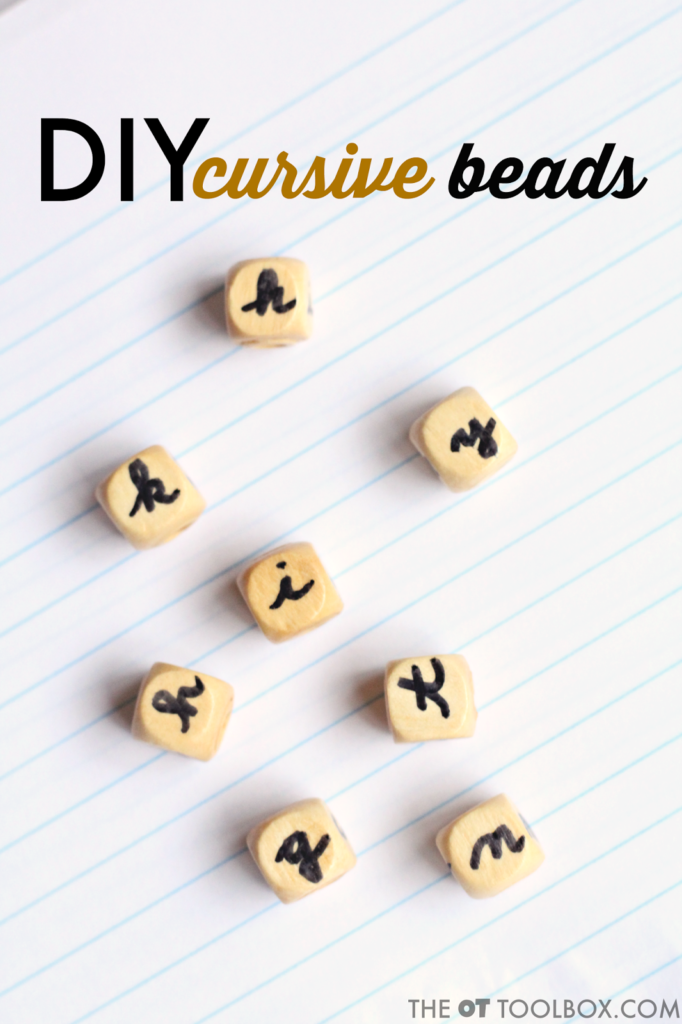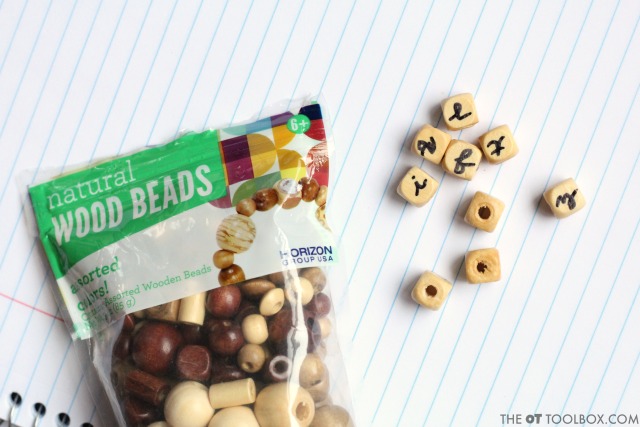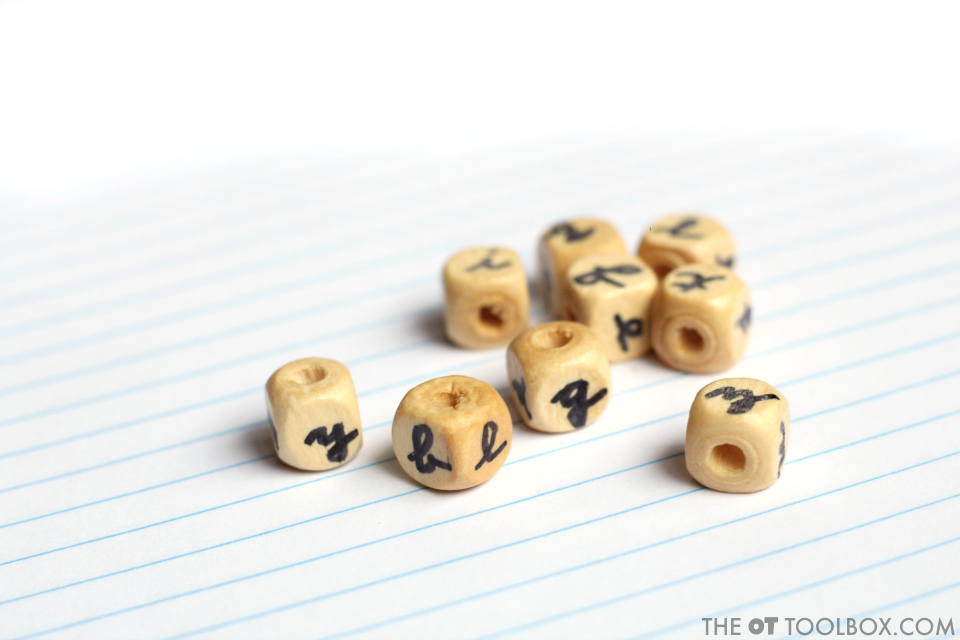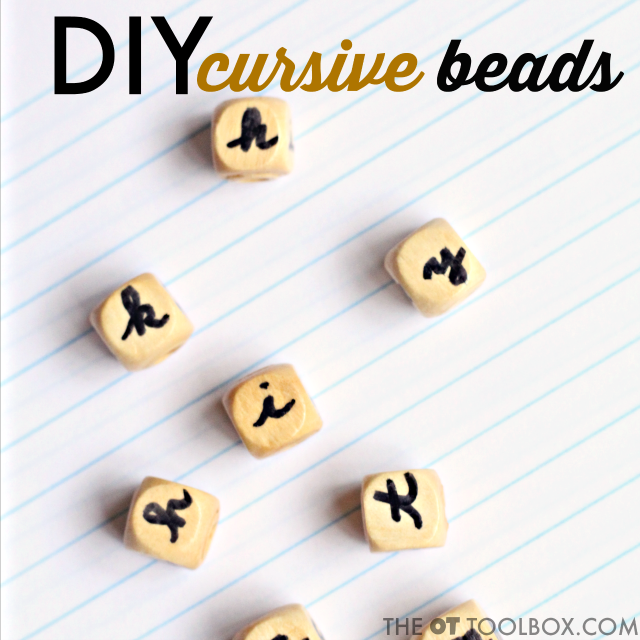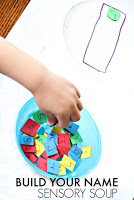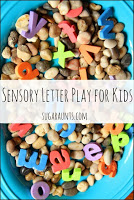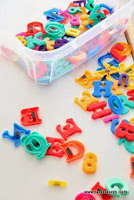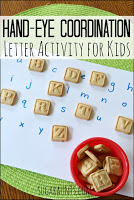Cursive Slime Activity
There is a lot more information on cursive letter families as well as more cursive writing strategies and tools here and in the How to Teach Cursive Writing series that we have on The OT Toolbox this month.
Grab more cursive writing tips and strategies for teaching cursive handwriting under the cursive writing tab up above.
For this cursive slime activity, you will first need a batch of slime. We love to make non-borax slime for safety reasons.
Our favorite recipe (and my YouTube loving kids are HUGE fans of trying all.the.recipes) is this contact solution and baking soda slime recipe. It’s a quick slime recipe that pulls together easily and one that older kids can make on their own.
Then, add cursive letter beads.
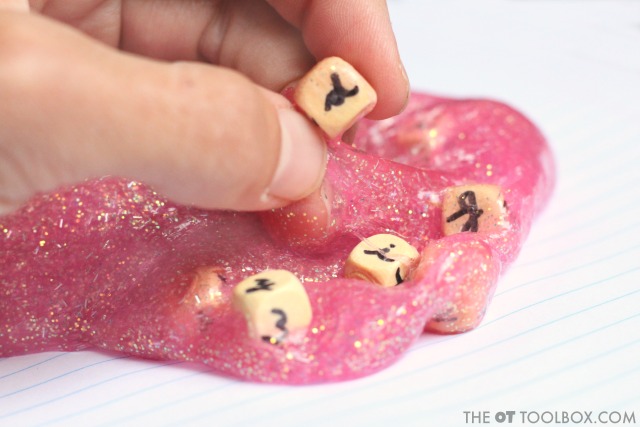
Now, it’s time to play! Kids can play with this cursive slime activity in so many ways.
Look for letters according to cursive letter family, match cursive letters, and sort.
Pull the beads out of the slime and press them back in again. What a workout for the hands.
Here are a few more slime or sensory dough recipes that would be perfect for hiding and pulling out the cursive letter beads:
How to Make Crayon Play Dough
Pair crayon play dough with Harold and the Purple Crayon book
Use broken crayons to make crayon floam dough
Celebrate the sparkle with gold, sliver, and bronze metallic crayon play dough
